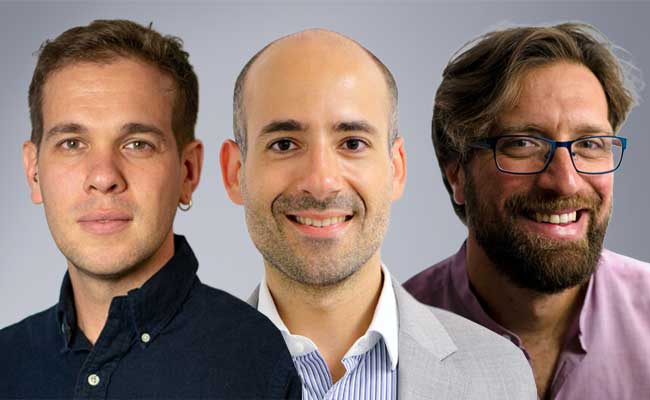New Wireless Sensing Technology Based on Ising Dynamics

ECE Assistant Research Professor Luca Colombo, Professor Matteo Rinaldi, and Associate Professor Cristian Cassella published research on “Programmable Threshold Sensing in Wireless Devices Using Ising Dynamics” in Nature Electronics. They embedded intelligence capabilities in a wireless sensor tag that has the potential to revolutionize the Internet of Things and AI by improving accuracy and reducing energy use.
This article originally appeared on Northeastern Global News. It was published by Kate Rix. Main photo: Cristian Cassella’s wireless passive sensor, pictured in his lab, can make decisions based on sensed data, improving accuracy and cutting energy use.
New intelligent sensors developed by Northeastern researchers improve accuracy and cut energy use
Your home’s thermostat relies on a sensor to determine when to switch the heat or air conditioning on or off. These wireless sensors are at the core of the so-called “internet of things,” enabling smart devices to collect and share data.
But most sensors still depend on toxic lithium batteries for power. So far, they haven’t been able to make accurate decisions on their own, especially when processing complex information like identifying multiple threats before triggering an alarm.
Borrowing from condensed matter physics, researchers at Northeastern University have embedded intelligence capabilities in a wireless sensor tag, a development that has the potential to revolutionize the Internet of Things and artificial intelligence.
“This is very promising technology because the sensors can be manufactured very easily, they do not constitute a burden to the environment and they do not require any periodic maintenance,” says Cristian Cassella, associate professor of electrical and computer engineering at Northeastern and a co-author of the research.
The new research was published in the journal Nature Electronics.
Most wireless sensors rely on energy from nearby radio waves or light, which can be inconsistent, Cassella says. They also lack the ability to process the signals they detect or perform computations before sending data back to the reader.
Read full story at Northeastern Global News